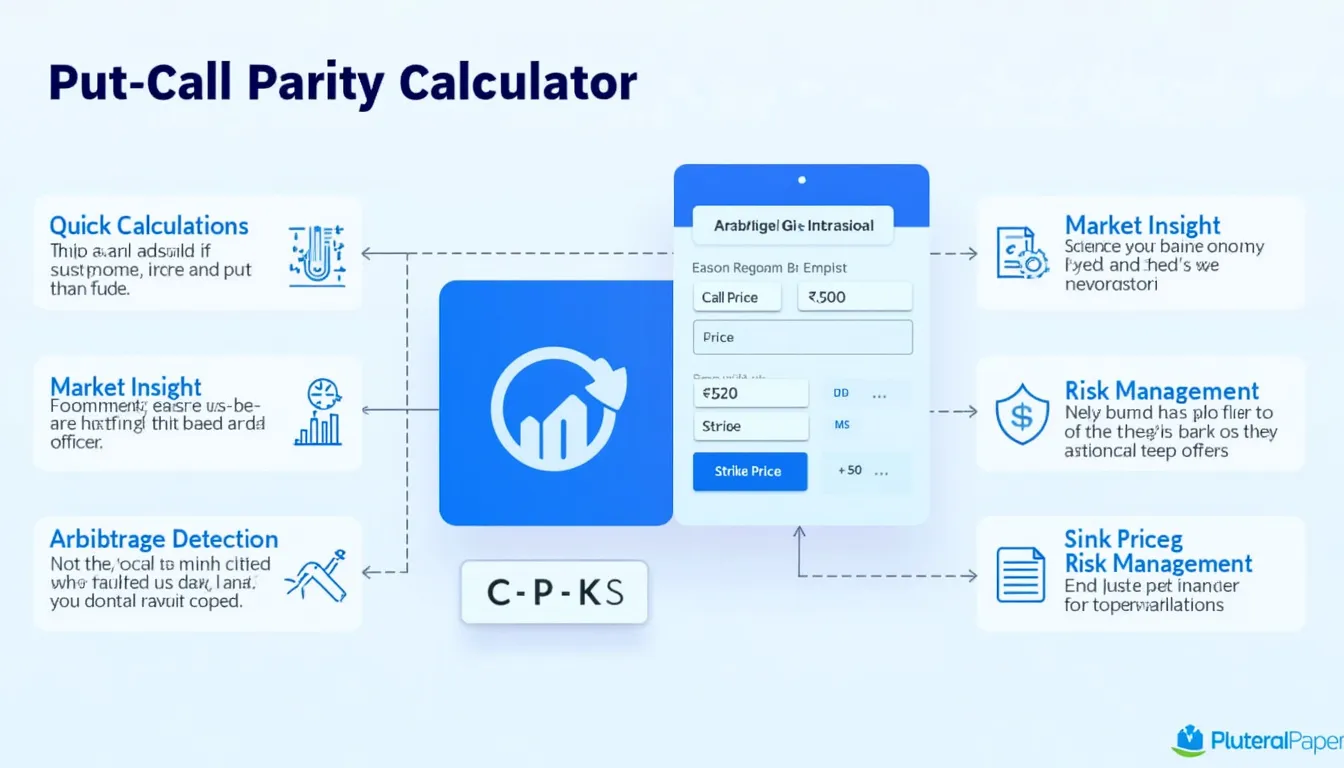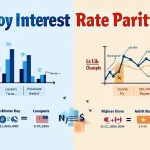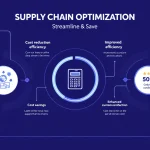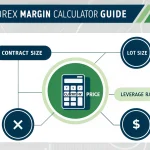Put-Call Parity Calculator
Is this tool helpful?
How to use the tool
- 1. Call Price (C) – type any non-negative value, e.g., $8.40 or $12.25.
- 2. Put Price (P) – enter a matching-maturity put, e.g., $3.10 or $1.95.
- 3. Strike Price (K) – supply the shared exercise price, e.g., $105.00 or $130.00.
- 4. Calculate – the form returns the implied future price S.
Formula
For European options without dividends and with a short maturity, the present value of the strike approximates K, giving:
$$S = C – P + K$$Full expression:
$$C + PV(K) = P + S$$Example 1
- C = $8.40
- P = $3.10
- K = $105.00
- Implied S = 8.40 − 3.10 + 105.00 = $110.30
Example 2
- C = $12.25
- P = $1.95
- K = $130.00
- Implied S = 12.25 − 1.95 + 130.00 = $140.30
Quick-Facts
- Works for European options only; early exercise skews parity (Hull, 2022).
- Inputs must be non-negative real numbers (SEC, https://www.sec.gov).
- Assumes flat interest; adjust PV(K) with r ≈ 4 % for one-year terms (FRED, 2023).
- Typical retail option commission: $0.65 per contract (Schwab, 2023).
FAQ
What does the calculator deliver?
It outputs the implied future spot price of the underlying, calculated with S = C − P + K (Investopedia, https://tinyurl.com/putcallparity).
Which option style fits put-call parity?
Parity holds exactly for European options that can be exercised only at expiry (Hull, 2022).
How can I detect arbitrage?
Compare S from the tool with today’s spot; gaps beyond transaction costs signal arbitrage (CBOE, 2023).
Does the formula include interest?
No. For multi-month trades discount K: PV(K)=K·e−rT (Berk & DeMarzo, 2020).
Is dividend yield reflected?
Dividend payments lower call value and raise put value; adjust S by subtracting PV(dividends) (Black & Scholes, 1973).
Why can S differ from current price?
Premiums price in expected volatility and cost of carry, moving S above or below spot (Natenberg, 2015).
Can I apply this to commodities?
Yes, as long as the options are European and share strike and expiry (CME Group, 2023).
What if my inputs turn negative?
The form rejects negatives; option prices cannot be below zero in regulated markets (SEC, https://www.sec.gov).
Important Disclaimer
The calculations, results, and content provided by our tools are not guaranteed to be accurate, complete, or reliable. Users are responsible for verifying and interpreting the results. Our content and tools may contain errors, biases, or inconsistencies. We reserve the right to save inputs and outputs from our tools for the purposes of error debugging, bias identification, and performance improvement. External companies providing AI models used in our tools may also save and process data in accordance with their own policies. By using our tools, you consent to this data collection and processing. We reserve the right to limit the usage of our tools based on current usability factors. By using our tools, you acknowledge that you have read, understood, and agreed to this disclaimer. You accept the inherent risks and limitations associated with the use of our tools and services.







